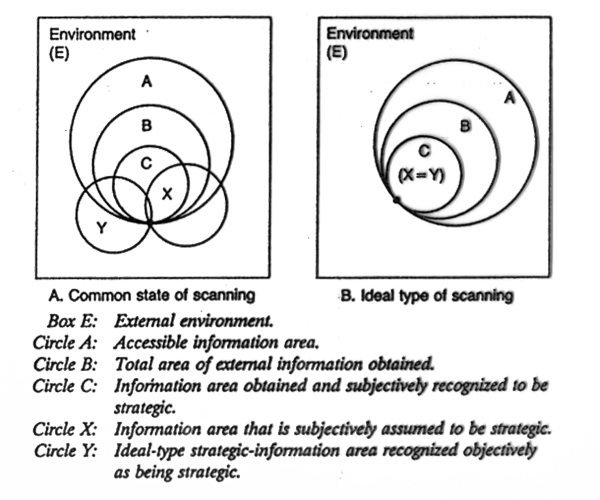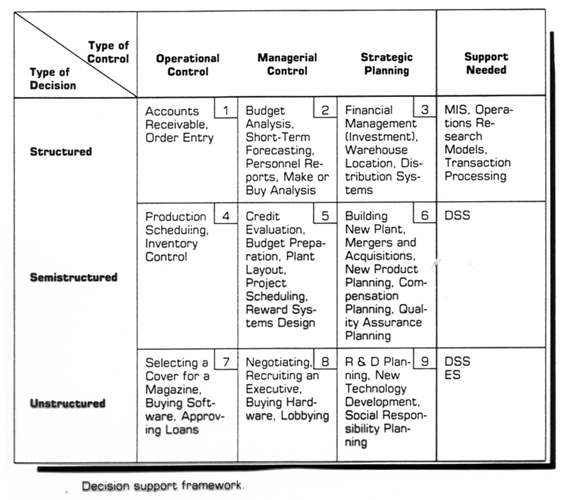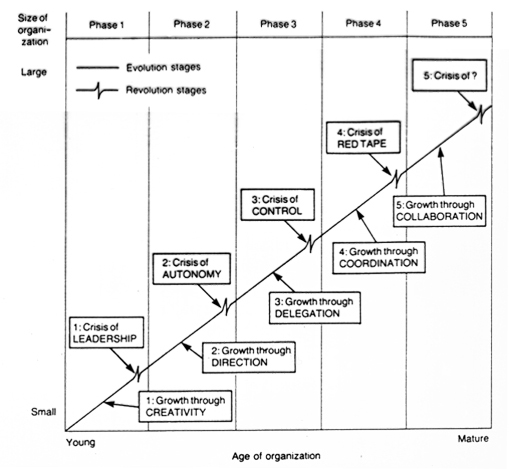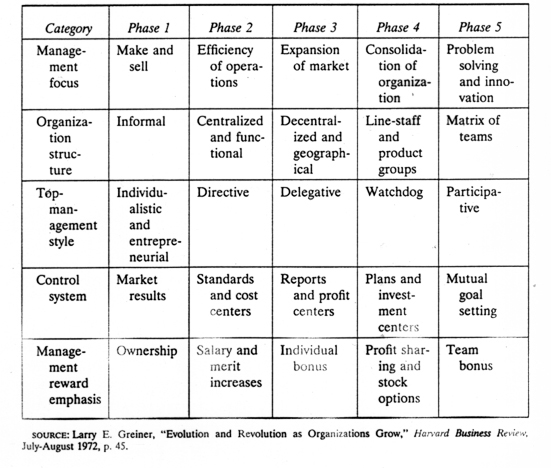Management
Among other definitions, management is defined in Webster Dictionary as the act of
managing, which itself is "to conduct business, commercial affairs; be in charge; to
dominate or influence; to control".
For the Management of Open Systems, or Interorganizational Systems, you can read the essays written by
the students from the FEBA.
Here we will apply systems approach in studying the phenomena of management related in
general to social systems. The following five elements have to be considered, when
studying a system:
- Mission:objectives of the system together with performance measures;
- Environment:all that lies outside the systems’ control, and therefor can be
considered as given, also environment includes all that determines how the system
performs;
- Resources:in economic literature, consideration of resources are usually limited only to
human, financial, and material resources of a system. Currently information is recognized
also among the most valuable resources.
- Components:activities, the system must perform to realize its objectives.
- Management:planning, control, organizing, communicating, motivating (Drucker P.
Management: Tasks, Responsibilities, Practices. Heinemann, 1974)
From functional viewpoint a system is build from four kinds of objects:
- input
:may be matter, energy, human, information. Inputs may vary from raw materials,
used in manufacturing, to financial instruments; from observations on the local market, to
a highly sophisticated scientific result, which potentially could be used as a new
technology. We can consider two kinds of input: directly accepted from the environment and
generated inside the system (feedback).
- process
:transformation the input into an output. As a such it may be represented as
production pipelines, individuals performing technology, chemical process, etc. In many
cases the process is split into subsystems with its own input-process-output-feedback
components.
- output:
results of operation of the process, or the purpose for which the system
exists. Three kinds of output can be distinguished: directly consumed by other systems,
consumed by the system itself in the next production cycle, and garbage.
- feedback
:performs control function on the system’s performance.
Relationships: bonds that links the objects together. We can distinguish between
symbiotic and synergistic relationships. The first occur, when the connected objects
cannot continue to function alone. The second address the case in which the combined
action adds substantially to the system’s performance.
Environment: The following diagram represents relation between a social system
and different components of its environment:

Organizational structure: Other way of study an organization is according to its administrative
(departmental) structure. The function of the organization could be divided between
departments, such as accounting, production, marketing, etc. Every department is
responsible for management of a separate subset of organizational activities and the role
of the executive (top) level of management is to perform control over departments, to set
the goals, to develop and/or approve plans, and to allocate resources. It is obvious that
relations between departments in a given organization is symbiotic and management may
support development of that relation as a synergistic.
We can consider management as a hierarchy. The level is defined according to the two
criteria: structureness and scope of the decisions.
Functions of management:
- Set goals
:mission of an organization is set by its founders. To perform its mission,
the organization defines certain goals. They could be long-term or strategic goals,
short-term or tactical goals, goals of a given project; financial, social, etc. Setting
realistic goals, which support mission is the starting point of any managerial activity.
Often the term "goals hierarchy" is used to describe distribution of goals over
hierarchy of the organization. From that perspective, goals setting is the most important
task of the management on every level of the organization.
- Allocation Resources
:the three types of resources: human, financial, and material
are long ago recognized as valuable necessities. Recently the value of information was
recognized also as a strategic resource with a critical impact on overall performance of
an organization. Some researchers (P. Mateev, personal communication) argue that
information is the only strategic resource.
Allocation of resources is critical for the success of any activities. The usual case -
shortage of resources, requires careful planning of both achieving resources and use of
them. It is especially important for information, where the time (newlyness) is its main
attribute (you cannot achieve information and keep it for a century as you can do it with
land or money).
- Planning
:Plans address future actions. Therefore plans are based on forecasts for
the behavior of the system and its environment. Planning involves all aspects of the
system: goals, environment, utilization of resources, activities. Planning the change of
organization to meet emerging challenges is among the most important tasks of the
executive management. Essential to all realistic plans is the planning to change (to
adapt) the plans. In any ongoing systems, plans must be subject to periodic review, based
on evaluation of achievements and changes in the environment. Time horizon is critical
attribute of a plan.
- Control:
examination of the execution of plans
- Communication
:both to explain and motivate company’s personnel and to execute
exchange with all of the players in the environment.
Measuring of a system’s performance:
Effectiveness (to do the right things) the degree to which goals are achieved
(measure of the results or the system output)
Efficiency (to do the things right) is a measure of the use of input (or
resources).
Problem solving
That is the basic activity of the management. With the term "problem" we
will qualify also opportunities. In general "problem" is any situation which
requires changes of the smooth operation of the system.
The following phases could be distinguished in the process of problem solving:
- The Intelligence
Finding that a problem exists. Dissatisfaction of the way things are going, or
emerging changes in the environment. Dissatisfaction is the result of a difference between
expected and achieved - symptoms that a problem exists. Emerging changes in the
environment must be detected as early as possible. Both sources requires systematic and
continuous search and scanning. Identification of the problem based on existing symptoms
is critical in the preliminary investigation.
Problem classification. One classification of the problems is according to it
structureness. The two extremes are programmed versus nonprogrammed
problems. The first is a well-structured, repetitive, and routine problem, for which
standard models and solutions have been worked out. The other extreme is a poorly
structured problem, which is novel and nonrecurrent.
Other classification is based on controllability of the problem - whether the system
have a control over the problem (e.g. an earthquake is out of control).
Problem decomposition. Many complex problems can be broken apart into
subproblems.
Problem addressee. A problem exists in an organization only if the organization
has the capability to solve it. It is important direct the problem to the right to
addressee inside the organization.
- The Design
Generation, development, and analyzing possible courses of action, leading to
solving the problem - design of alternative solutions. It includes also activities
such as understanding the problem and testing solution for feasibility. To do that a model
of the problem situation is constructed, tested, and validated.
A model is an abstraction of the reality and it is presented usually in quantitative or
qualitative form.
The following aspects must be considered on that phase:
- the components of the model
:





